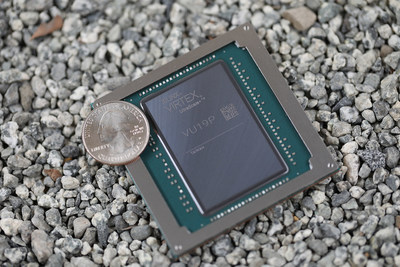Are you considering transitioning from FPGA to ASIC but are not sure where to start? Look no further! This guide will provide a comprehensive overview of the steps necessary for successful FPGA-to-ASIC conversion. In it, we’ll cover topics such as design flow differences, design considerations, pros and cons of each technology, cost implications, and much more. By exploring these details thoroughly we can ensure that the process of converting your product or system from an FPGA to an ASIC is performed in the most efficient manner possible with the highest likelihood of success. Read on to learn more about how this critical transformation is accomplished.
Understand why you’re converting from FPGA to ASIC
Making the switch from FPGA to ASIC can seem like a daunting decision, but it is often the best choice for your project. The benefits of using an ASIC are immense, from speed and power savings to having more control over overall design. Converting from an FPGA to an ASIC also increases production yields and chip density, meaning that you can fit more logic into a single device in less time and with less effort. Overall, FPGA to ASIC conversion allows developers to optimize their projects while ensuring they are getting maximum performance out of their hardware.
Learn about the advantages and disadvantages of each technology

Investigating the advantages and disadvantages of fpga to asic conversion is essential for making informed decisions about implementing new technology. This type of conversion allows flexibility in choosing components due to its relatively lower capital costs and high degree of programmability when compared to ASICs. However, it can be more vulnerable to outside interferences and consuming larger quantities of power. When assessing this conversion, it’s important to consider the performance gain versus power consumption as well as other external factors related to maintaining security and stability in a system architecture. Understanding fpga to asic conversion can help one make sound decisions on whether such components are suitable for implementation or if other alternatives should be explored that better align with business needs.
Consider what type of application is best suited for FPGA or ASIC
When it comes to fpgas and asics, the best application highly depends on its use case. FPGAs are particularly suited to applications which require high speed signals, analog interface functions or any situations where a frequent fpga to asic conversion is required. Since fpgas can be more easily re-programmed for design changes, they can be beneficial for applications in rapidly adapting markets. On the flip side, ASICs are preferable for processes that don’t have frequent change or need very specific data throughputs and functionalities due to their optimized performance capabilities. Ultimately, your choice between fpgas and asics should be based on a cost-benefit analysis of both possibilities alongside the application itself.
Analyze the costs and benefits associated with the conversion process
FPGA to ASIC conversion can be a complex and costly process, but it can also provide significant benefits depending on the application. Though tools and methodology used in this process may incur incremental cost and development time, the resulting ASIC design will likely be lower power and faster than with an FPGA. In addition, because the process is largely automated, those utilizing conversion are unlikely to experience design errors or omissions typically associated with manual entry. Moreover, for high volume applications of replicable components or products, a mass production architecture can result in dramatically reduced per-unit costs from manufacturing. Ultimately, thoughtful analysis of the costs and benefits of FPGA to ASIC conversion will indicate whether investing in transitioning to an ASIC is worth it for any given application.
Research reliable resources, materials, and tools that can help with the conversion
When it comes to fpga to asic conversion, having reliable resources, materials, and tools are essential. Doing research on which fpga is suitable for the project and comparing multiple fpgas with each other can give insight into which fpga is the best fit. Identifying the interface standard of the fpga can help narrow down results when researching for reliable materials. Researching for design automation tools that are compatible with fpgas can simplify designing a circuit from fpga to asic format. Lastly, considering manufacturability of an fpga design before converting to asic can ensure that the whole procedure runs smoothly and efficiently.
Outline specific steps to take when designing an ASIC from an FPGA design
When transitioning an FPGA design to an ASIC, it is important to consider the process meticulously. First and foremost, designers should concentrate on porting the design from the FPGA material to a synthesizable RTL language like Verilog or VHDL. This step is necessary for implanting the design into silicon for testing and simulations. Afterward, designers must optimize their design in terms of area and power consumption. Finally, proper optimization of the layout and on-chip clocking schemes will ensure adequate performance rates such as low latency delay, high speed clock rate etc – all essential traits when striving towards an effective fpga-to-asic conversion.
Overall, when considering a conversion from FPGA to ASIC, it is important to consider the advantages, challenges and costs of this decision. In order to be successful in the conversion process, research into reliable resources should be conducted in order to obtain the best materials and tools for design. Moreover, it is important to understand which application is suited for either an FPGA or an ASIC as each have their individual set of capabilities. Additionally, once understanding why this decision should be made, ensure that specific steps are taken in order to create a successful design and secure the results intended from the migration. For those who would like guidance in this transition process, there are many services available who specializes in these types of conversions. At the end of the day, when evaluating how FPGA versus ASIC will shape your system or product’s performance or future production, carefully consider all options coupled with cost benefits analysis before jumping into any design decisions.

